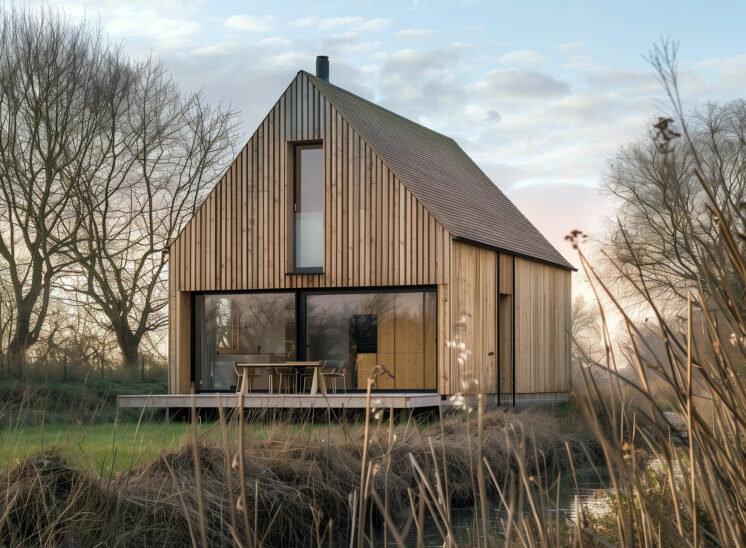
The Government’s Planning for Gypsy and Traveller Caravan Sites: A New Era in Inclusive Housing
Introduction
Ensuring that everyone has access to decent housing is a fundamental objective of the UK government. This goal extends to all communities, including the often overlooked gypsy and traveller communities. The recent update in government guidelines, encapsulated in the new Circular that replaces Circular 1/94, marks a significant step forward in addressing the needs of these communities while promoting social inclusion and cohesion across England. This article delves into the key aspects of the Circular, which is designed to improve site provision, planning processes, and ultimately the quality of life for gypsies and travellers.
Contextualizing the Need
Gypsies and travellers make up a small fraction of the UK’s population, with only a portion living in caravans. According to the July 2005 Caravan Count, around 16,000 gypsy and traveller caravans exist, with approximately three-quarters stationed on authorized sites. Despite the relatively small numbers, the need for proper site provision is critical, not just for the well-being of the gypsies and travellers but also for fostering better relationships with settled communities. The Circular acknowledges the health and education disadvantages faced by gypsies and travellers, linking these directly to the lack of adequate site provision.
Planning Process: A Structured Approach
The planning process outlined in the Circular is structured around the Gypsy and Traveller Accommodation Assessments (GTAAs), Regional Spatial Strategies (RSS), and Development Plan Documents (DPDs). This systematic approach ensures that the needs of the gypsy and traveller communities are assessed comprehensively and translated into practical, actionable plans at the local level.
1.Gypsy and Traveller Accommodation Assessments (GTAAs):
The foundation of the planning process, GTAAs, involves local authorities assessing the accommodation needs of gypsies and travellers within their jurisdictions. The data collected feeds into the broader planning framework, ensuring that the needs are met through appropriate site allocations.
2.Regional Spatial Strategy (RSS):
At the regional level, the RSS plays a pivotal role in ensuring that the pitch requirements identified by GTAAs are integrated into the overall housing strategy. This step ensures a coordinated approach across regions, preventing the over-concentration of sites in specific areas.
3.Development Plan Documents (DPDs):
The DPDs translate the pitch numbers set out in the RSS into specific site allocations. This step is crucial in providing certainty for both the gypsy and traveller communities and the local populations regarding where sites will be developed.
Community Involvement: Building Bridges
The new planning system emphasizes early and continuous engagement with both gypsies and travellers and the settled community. This approach is designed to reduce the tensions that often accompany unauthorized encampments and developments. By involving all stakeholders from the outset, the planning process can better reflect the needs and aspirations of the community as a whole.
Transitional Arrangements: Bridging the Gap
Recognizing that the new planning framework will take time to fully implement, the Circular includes provisions for transitional arrangements. These arrangements are designed to address immediate needs, particularly in areas with high numbers of unauthorized sites. Local planning authorities are encouraged to bring forward DPDs containing site allocations even before regional considerations are complete, ensuring that immediate needs are met without delay.
Site Provisions in Rural and Countryside Areas
A significant portion of the gypsy and traveller population resides in rural areas, where the availability of affordable land is a persistent challenge. The Circular addresses this by encouraging local planning authorities to include ‘rural exception site policies’ in their DPDs. These policies operate similarly to those for conventional housing, allowing for the provision of gypsy and traveller sites in rural areas where there is an identified need.
However, the Circular also recognizes the constraints imposed by the Green Belt and other areas with special planning designations. While there is a general presumption against development in these areas, the Circular allows for exceptions in cases where there is no other suitable land available, provided the development does not compromise the objectives of the designation.
Mixed Planning Use: Integrating Work and Living Spaces
Given that many gypsies and travellers run their businesses from the same sites where they live, the Circular encourages local authorities to identify sites suitable for mixed residential and business uses. This provision is particularly relevant for trades that require space for vehicles or materials, such as scrap dealing or landscaping. By accommodating these needs within the planning framework, the Circular aims to reduce unauthorized developments and promote compliance with planning controls.
Enforcement and Sustainability
The Circular also emphasizes the importance of sustainability in site selection, not just in terms of environmental impact but also in promoting peaceful coexistence between gypsies and travellers and the settled community. This includes considerations such as access to health services, schooling for children, and reducing the need for long-distance travel.
Effective enforcement is another critical aspect of the Circular. Local authorities are encouraged to take firm action against breaches of planning control while ensuring that their policies are fair and non-discriminatory. The Circular underscores the importance of proportionality in enforcement actions, considering the potential impact on the human rights of the individuals involved.
The Circular represents a significant shift in the government’s approach to planning for gypsy and traveller sites. By fostering early engagement, promoting sustainable site provision, and ensuring fair treatment within the planning system, the Circular aims to create inclusive communities where all citizens, including gypsies and travellers, can thrive. The success of this initiative will depend on the commitment of local authorities, the active involvement of gypsies and travellers, and the willingness of all stakeholders to work together towards a common goal.



A Comprehensive Guide to Planning for Gypsy and Traveller Sites in 2024
Introduction
The planning landscape for gypsy and traveller sites has evolved significantly in recent years. With increasing recognition of the rights and needs of these communities, local authorities across the UK are now tasked with ensuring that their planning frameworks are inclusive, sustainable, and effective. This guide provides an up-to-date overview of the planning processes, legal frameworks, and best practices for creating and managing gypsy and traveller sites in 2024.
Understanding the Legal Framework
The planning system for gypsy and traveller sites is governed by a combination of national and local policies. Key pieces of legislation include mainly:
1.The Planning and Compulsory Purchase Act 2004: This Act introduced major changes to the planning system, including the requirement for local authorities to create Local Development Frameworks (LDFs), which include policies on gypsy and traveller sites.
2.The Housing Act 2004: This Act mandates local housing authorities to assess the accommodation needs of gypsies and travellers as part of their broader housing strategies.
3.The National Planning Policy Framework (NPPF): The NPPF provides overall guidance on planning, including specific policies related to the provision of sites for gypsies and travellers.
4.The Equality Act 2010: This Act requires public authorities to consider the needs of protected groups, including gypsies and travellers, in their decision-making processes.
5.The Planning Policy for Traveller Sites (PPTS) 2015: This document provides specific guidance on planning for traveller sites, emphasizing the need for local planning authorities to ensure a fair and equal approach to site provision.
The Planning Process
The planning process for gypsy and traveller sites involves several key steps, each of which is essential for ensuring that the needs of these communities are met in a fair and sustainable way.
1.Accommodation Assessments:
Local authorities are required to conduct regular assessments of the accommodation needs of gypsies and travellers within their jurisdictions. These assessments, known as Gypsy and Traveller Accommodation Assessments (GTAAs), are a critical first step in the planning process. The data gathered from these assessments helps to inform the number of pitches and sites needed in the area.
2.Local Plan Development:
Based on the findings of the GTAAs, local authorities must develop policies within their Local Plans that specifically address the provision of gypsy and traveller sites. These policies should include criteria for site selection, taking into account factors such as access to services, environmental sustainability, and the impact on the local community.
3.Site Identification and Allocation:
Local authorities must identify specific sites for gypsy and traveller use within their jurisdiction. This may involve the allocation of public land or working with private landowners to make suitable land available. In areas with significant planning constraints, such as Green Belt land, local authorities are encouraged to explore all available options, including the use of rural exception sites.
4.Community Involvement:
Engaging with both the gypsy and traveller communities and the settled population is essential for successful site planning. Early and continuous consultation helps to ensure that the needs of all stakeholders are considered and that potential conflicts are minimized. The Planning Policy for Traveller Sites (PPTS) encourages local authorities to foster good relations between these communities through transparent and inclusive planning processes.
5.Planning Applications:
When a site is identified, the next step is to submit a planning application. This process is similar to that for other types of development, with considerations such as site access, environmental impact, and sustainability being key factors in the decision-making process. Gypsies and travellers seeking to develop private sites are encouraged to engage with local planning authorities early in the process to ensure that their applications are compliant with local planning policies.
Best Practices for Sustainable and Inclusive Site Development
In recent years, there has been a growing emphasis on the sustainability and inclusivity of gypsy and traveller sites. Best practices in this area include:
1.Location and Accessibility:
Sites should be located near essential services such as schools, healthcare facilities, and public transportation. This ensures that gypsies and travellers have the same access to services as the settled community, which is crucial for social inclusion and equality.
2.Environmental Considerations:
Sites should be developed with environmental sustainability in mind. This includes considerations such as minimizing the impact on local ecosystems, ensuring proper waste management, and providing adequate green spaces. The use of sustainable building materials and energy-efficient infrastructure is also encouraged.
3.Design and Layout:
The design of gypsy and traveller sites should promote a sense of community while providing privacy and security for residents. This can be achieved through thoughtful site layout, the provision of communal spaces, and the use of landscaping to create a pleasant living environment.
4.Health and Safety:
Ensuring the health and safety of site residents is paramount. This includes providing access to clean water, sanitation, and waste disposal facilities, as well as ensuring that the site is free from environmental hazards such as flooding or pollution.
5.Integration with the Local Community:
Successful site development involves fostering positive relationships between gypsy and traveller communities and the settled population. Local authorities can facilitate this through community engagement initiatives, the provision of shared spaces, and the promotion of cultural understanding.
Challenges and Considerations
While progress has been made in recent years, there are still challenges associated with planning for gypsy and traveller sites. These include:
1.Overcoming Prejudice and Discrimination:
Gypsies and travellers often face prejudice and discrimination, which can create barriers to site development. Local authorities must work proactively to address these issues and ensure that their planning processes are fair and non-discriminatory.
2.Balancing Competing Interests:
The needs of gypsies and travellers must be balanced with those of the settled community. This requires careful planning and consultation to ensure that site developments do not lead to conflict or resentment.
3.Navigating Planning Constraints:
In areas with significant planning constraints, such as Green Belt land or Areas of Outstanding Natural Beauty (AONBs), finding suitable sites can be challenging. Local authorities must be creative and flexible in their approach to site allocation, exploring all available options to meet the needs of gypsies and travellers.
Planning for gypsy and traveller sites is a complex and multifaceted process that requires careful consideration of legal requirements, community needs, and sustainability goals. By following best practices and engaging with all stakeholders, local authorities can develop sites that meet the needs of gypsies and travellers while promoting social inclusion and community cohesion. As we move forward in 2024, it is essential that these efforts continue to evolve, ensuring that gypsies and travellers have fair access to the housing and services they need to lead healthy and fulfilling lives.







